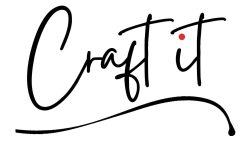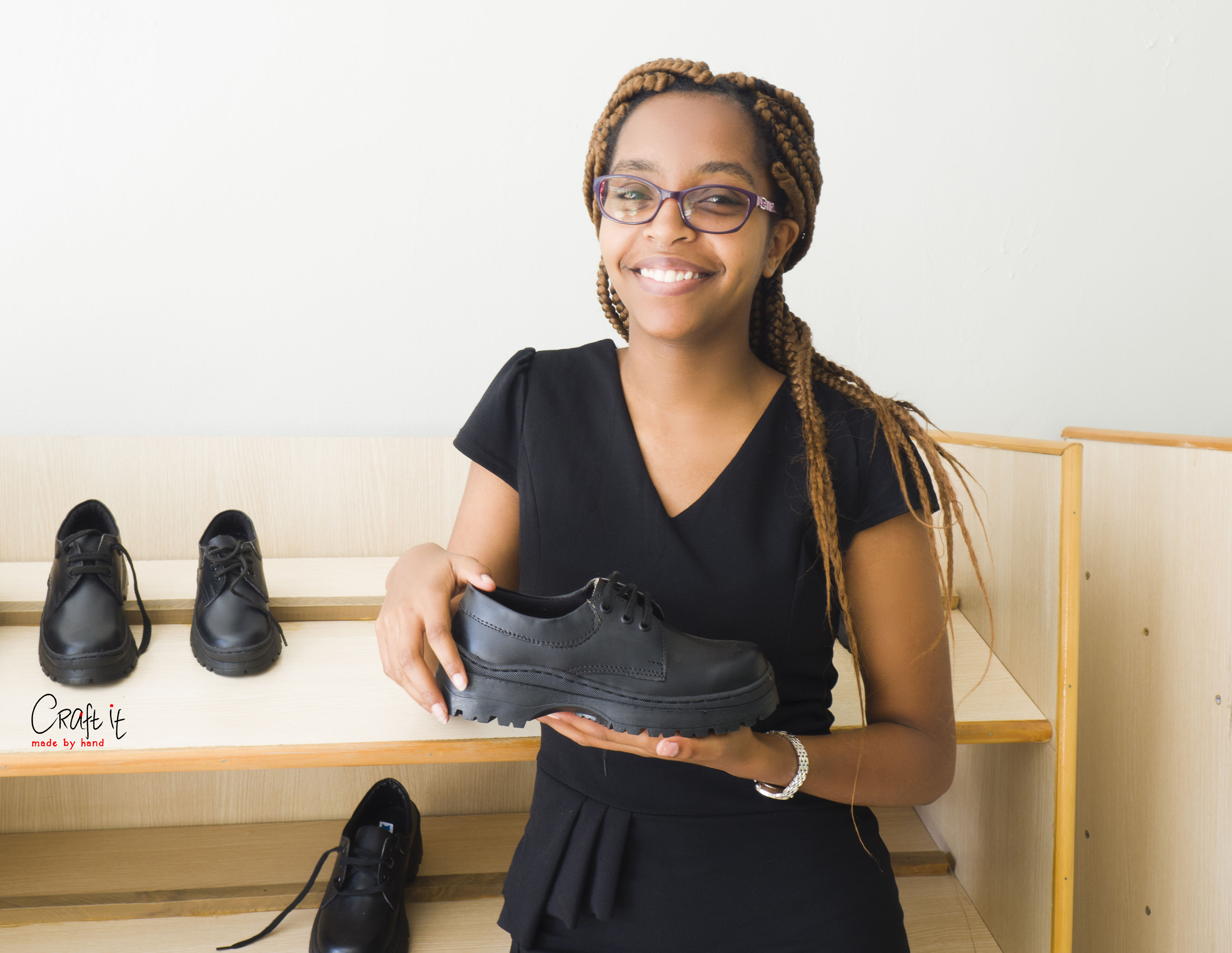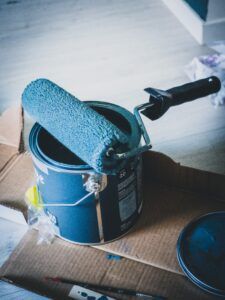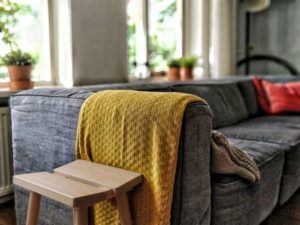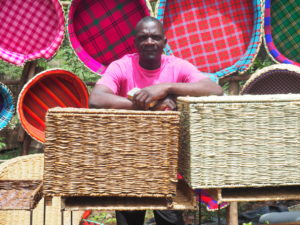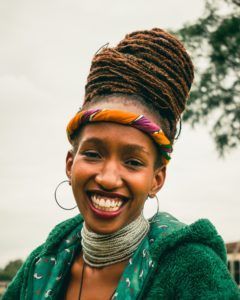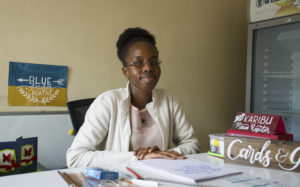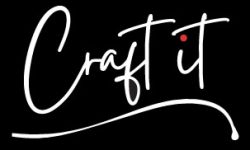BY FLORENCE BETT-KINYATTI
Help me out here, will you? I want to describe how Manje’s store of preserved hides and skins smells like but I can’t quite finds the right words.
[After several days of several failed attempts…]
OK, here’s a morbid – and lazy – illustration: Have you ever stepped into a morgue and the smell of death, lifelessness and all the chemicals the morgue attendant uses to preserve the human body comes at you like a gust of harmattan winds over the Sahara?
That’s how it is for Will and I: Manje had the store man open the door for it and the stench knocks us back in a stumble, we even stop mid-step and shut our eyes, because… because we don’t want to ‘see’ the smell. The fingers of that odour wraps itself around our necks and squeezes the fresh air out of our lungs. We are dizzy for a few minutes, neither one of us says anything. Everyone else in there stands unmoved – they can’t register the stench actually, the atmosphere to them is as fresh as morning dew.
Manje quickly explains what’s what. He then says he has to leave right away because he some urgent parliament business to attend to. (Joseph Manje, the owner of Manje Leather, is also MP for Kajiado North. Call him Mheshimiwa.) We step out of the store and he jumps into his Prado, his bodyguard follows him in dramatically and they drive off into the knarls of government agendas. We didn’t even get a photo for this story.
He leaves Will and I in the competent hands of his daughter, Nelius Wanjiku. She’s a director of the company and a student at UoN.
“What are you studying?” I ask her.
“Electrical engineering,” she says. “Going to fourth year.”
“You like it?”
She offers me a thimble of a smile. “Yeah, I do.”
After Mheshimiwa (ahem) leaves, Wanjiku and I return into the store and she tell me about the business. “We only started making and selling shoes last year January. Manje Leather was registered as a company in May [2017] and the guys in production who were to make the shoes were already here in training; training took about three months. We sold our first pair in June.”
“And what was the business about before that?”
“So, before that, we used to sell hides and skins to a tannery in Athi River, it’s called Alpharama Limited. We’d buy the hides and skins locally, from the slaughter houses in Kiserian, Rongai and Isinya, then sell them to the tannery. Now we’re sending it to them to tan it for us into leather.
We’ve started with shoes but we eventually want to make bags, belts and wallets.”
~
Before this story goes any further, allow me to school you on what’s what. Indulge me.
Hide is the skin from a slaughtered cow. It’s sold by the kilo. Manje buys a kilo of hide from the slaughterhouse for between Sh25 and Sh30.
One hide can weigh anywhere between 16 and 30 kilos – it depends on the size and age of the cow. On any one day, Manje can buy up to 60 hides from the slaughterhouse.
Skin is the, uhm, skin from a slaughtered goat or sheep. It’s sold by piece. A piece of skin is Sh180
Green hide is the hide that has come directly from the slaughterhouse; it still has hair, fat, tattoos from a branding iron and the sound of the cow as it mooed its last, before its carotid artery met the blade of the slaughter’s knife. It’s also called raw hide or wet salted.
Preserved leather is, well, just that – preserved leather. It’s green hide that has come from the slaughterhouse to a store on Manje’s property for preservation. It’s preserved because they don’t need to send it to the tannery right away. Or maybe they sent it to the tannery and the tannery sent it back to them because it didn’t meet the tannery’s standard; maybe it had knife cuts and whatnot.
Later, when Marion and I are talking (you’ll come to know who Marion is later in this story), she tells me that they prefer to sell green hide to the tannery than preserved hide because it weighs more and fetches more by the kilo.
This green hide is preserved in the store using Magadi salt, Wanjiku tells me. Layers and layers of these green hides are stacked on top of each other with the larger-than-average granules of Magadi salt spread between them as if it’s margarine being spread between slices of bread. It looks like a giant sandwich, only one you wouldn’t want to eat.
A pile of each has about 300 hides and double the number of skins.
On the day of our interview, Wanjiku says there are 1,200 hides and 500 pieces of skin in the store. Some of these hides and skins have been there for two weeks, others for six months.
I touch some of them and shiver. “Can’t the hides and skins go…bad?”
“No,” Wanjiku says. “As long as it’s preserved correctly then it can stay in here for many months and the tanneries will still buy it. But the longer it stays preserved, the drier and tougher it gets.”
(I’m curious to see how hides and skins are tanned into leather. One day soon, Craft It will go into a tannery and we will show you in a video how it’s done. Make sure you’ve subscribed to our channel so you don’t miss out. Craft It, Made by Hand.)
“How much tanned leather can you get from one hide?”
Wanjiku looks away for a minute then says, “About 16 square feet.”
“And how many square feet do you need to make one pair of shoe?”
“It depends on the size of the shoe and the style – the men’s shoes take about two square feet and the children’s shoes take about one and a half.”
I look down at my feet and imagine what two square feet looks like. I can’t. I’m wearing some cheap-ass shoes I bought from Odeon bus stage for 500 bob; one of those Chinese shoes from those stalls near Shell Petrol station, those stalls that all sell the same stuff, the ones that play very loud Bongo and a very annoying voice over begs you to go in and steal yourself a pair.
I kinda prefer these Chinese shoes nowadays to mitumba brogues because they’re comfy for our summer and the leather is soft on my feet. Also, it may be because I’m losing my artsy cool (scary).
“How many pairs of shoes have you guys sold since you started production in June?”
Wanjiku bites the insides of her mouth and says slowly, “About 300 school shoes and 100 official shoes for men. But let me confirm that to you when we get back into the office.”
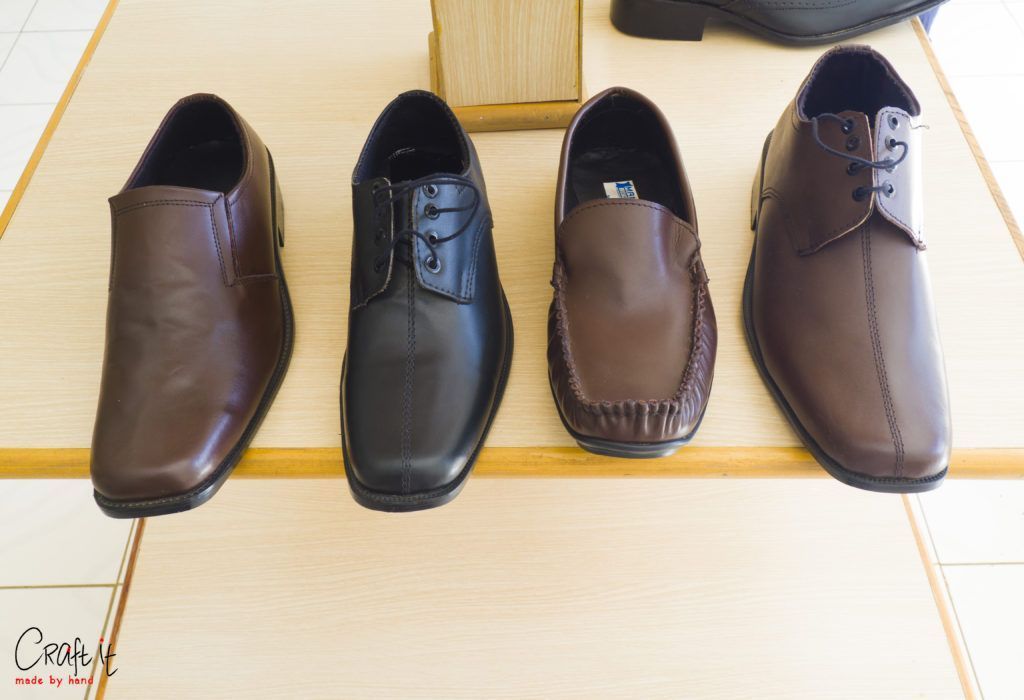
Men’s shoe handmade by Manje Leather
Let me quickly tell you a storo: Will and I got lost on our way to Manje’s. We had made good time to arrive for the interview and shoot by 8.30AM, just as Mheshimiwa had asked us to. But as a consequence of our blind decisions, we ended up driving in concentric circles like two wanderers chasing the wind.
First, we cut through the hubbub of Rongai town as it was stirring awake. Although, Rongai is a town that never really sleeps – it naps for only a few hours of each day, careful to keep one eye open so that it doesn’t get attacked by the urban bandits that’ll steal away its chaotic rough edges of pseudo-ruralism and leave it with some polish and orderliness.
We drive past The Smith Hotel and into Nkoroi, take the dip that announces we’re in Kiserian, Rift Valley.
Will and I are talking all the way, a Naijo mix pumps from the car stereo. It’s the mix that starts with Timaya and P-Square’s Dance. I like that one.
Will is telling me about wanting to go ice-skating at Panari. I tell him about my embarrassing attempt at Uchumi Aga Khan Walk to skate one Sunday afternoon; about how I just couldn’t stand up straight and skate, and how I felt like I was some stupid cartoon character on TV each time I fell. I also tell him how the skates I was given were moist and smelly in the inside and I didn’t have any socks on.
He laughs.
He’s a good kid, Will, he always laughs at my jokes even when he doesn’t have to.
It’s a Tuesday morning in February. What Will and I didn’t know then is that Nairobi would chart the highest temperatures that day of 31 degrees. All our sins, stories and sarcasm would somehow melt away in the fervour.
We’re in Kiserian when we start to look for the Chief’s Camp. Manje had told me that his workshop was right opposite the Chief’s Camp, at the Safaricom mast.
We ask some boda boda chaps and they point us toward the mouth of open way without saying a word. We drive up a narrow and steep dirt road that takes up past a string of kiosks and hotels, slaughterhouses, even a guesthouse called Fahari Slaughter Guest House (or something like that, Faraja Sleeping House, I don’t recall).
I couldn’t shake off the thought of a slaughterer stopping the beating heart of a cow in the morning then stopping some poor lass’s heart in that guest house in the afternoon. Hahha. What does the act of slaughter do to a man’s heart anyway? He must feel like some sort of demigod, mustn’t he, with that blade in his hand. Maybe he uses that blade on the lass as some sort of toy.
The gates of the slaughterhouse are thronging with Kuyos in bloody white coats and gumboots and Maasais pulling the ears of their bleating goats and sheeps, leading them to the kichinjio like errant schoolchildren being led to the headmaster’s office.
Anyway, it took some phone calls and patience from Mheshimiwa for him to direct us up the highway, back from where we’d come from. We easily find the Safaricom mast and Manje Leather’s location opposite.
It was right there off the highway. At Lemelepo. Really hard to miss.
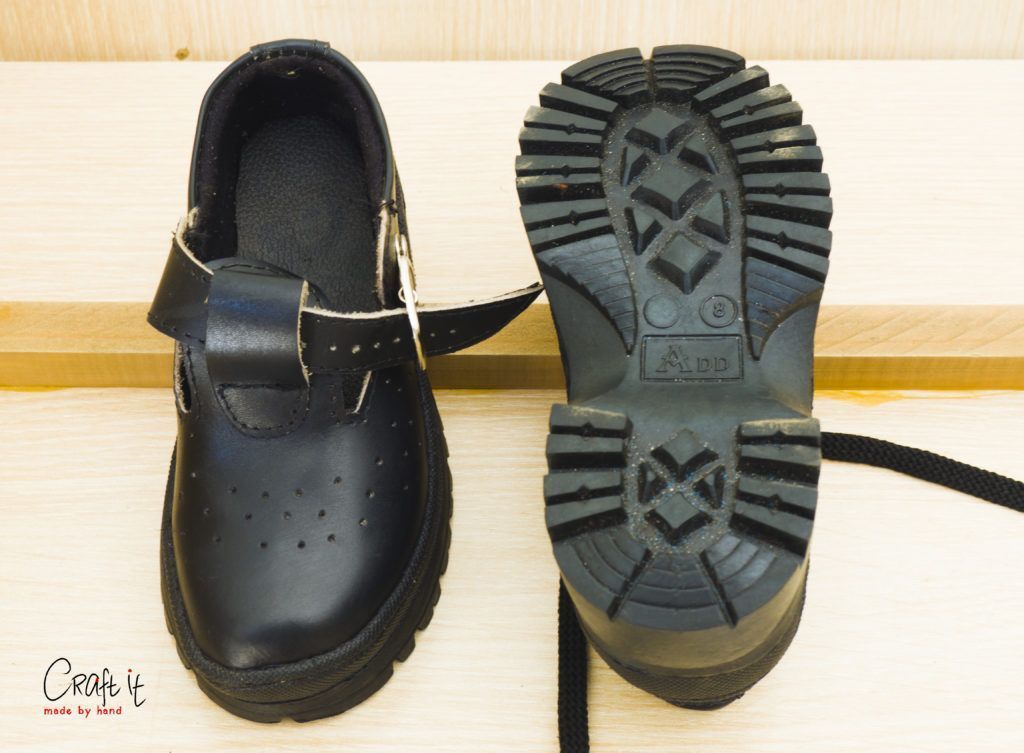
Shoes for schoolchildren handmade by Manje Leather
Will goes into the production room to shoot our video (I’m going to bang on and on about this video. You better watch the damn thing to the end, hahaa. And make sure to hit the ‘thumbs up’ button when you’re done). I sit down in the showroom with Marion for a chat.
Marion Njuguna is HR manager; she also supervises the books at arm’s length and sorta mothers the team because she has a cuddly motherliness about her, she’s mastered the art of playing her cards close to her chest. I like that she was able to say ‘no’ to some of my questions while still colouring it up with some don’t-get-hurt levity. I really liked that. I like it because it’s not something I’m able to do – if I need to tell you ‘no’ to something you’ve asked me for, I’ll chuckle awkwardly first then explain why I’m going to tell you no. It’s absurd, really. I’m 33 – I shouldn’t be afraid to tell you no.
I say to Marion, “Let’s talk about the shoe itself, tell me about the parts. No, actually, why don’t you show it to me on a shoe that’s still being made.”
Marion goes into the back of the production room and returns with the pieces of the parts of a shoe. She breaks it down for me. Marion says, “So the leather part is main part of the shoe, we call it upper. This leather is our tanned leather, the one we get from Alpharama; all the other parts we need to make the shoe, we source locally from around the area.
“Underneath this upper leather, we put the soft lining, it’s called rexin. Feel it, it’s like a cloth. Some shoe companies use this lining for the upper then say that the shoe is made of pure leather. If you’re a client buying that shoe and you don’t have the experienced eye, you won’t be able to tell the difference.”
I chime in, “I guess it’s why you see some shoes wearing out after only a few wears?”
Marion says, “Yes, that’s why. These are the shoes laces and the eyelets, the eyelets are the metallic ring that goes around the hole for the laces.
Then there’s the sole and the shank. This shank is metallic, it’s put in before the outer sole, between the insole and outsole; it’s put so that the sole doesn’t bend and crack. Then there are these stiffeners, they keep the shoe in shape and make it comfortable to wear.
And finally, the glue we use to piece all the pieces together. White glue is used for lasting, and the brown glue is used for joining the parts before they’re stitched.”
Marion gives me one pair of the children’s shoes. I hold the shoe in my hands and flip them over and under to examine them.
“Why do your school shoes look like Bata shoes, like Toughees?”
“Because most shoes for school are Toughees. Also, the guy who supplies soles to Bata also supplies them to us.”
“What’s the name of his company?”
“ADD,” says Marion.
I flip the shoe over and squint into the sole. ‘ADD’ is emblazoned into the sole. I bend the shoes in my hand and they don’t succumb to the pressure. I ask Marion, “These shoes feel a bit stiff, are they comfortable for the soft feet of school kids?”
“They are, yes! We’ve also received feedback about how durable the shoes are so far.”
“Mmh,” I say. I smell the inside of the shoe and finger the sticker brand. “How come you don’t make shoes for women?”
“We used to but we paused it for a bit.” Marion catches her breath then continues when I ask why, “Because women’s shoes are always changing in style and fashion. A style will be in today, you sleep and wake up to a different one tomorrow, so you need to have many different patterns that you can choose from so that you keep the women coming back. We haven’t bought that many patterns to makes shoes for the women.”
“You bought these patterns?” I ask, surprised.
“Yes,” Marion says, equally surprised.
“From where?”
“Kariokor market. There are people there who make them and sell them.”
“How much is one pattern?”
Marion chuckles and says, “I can’t tell you that.”
I smile back and say, “Trade secret?”
She nods like a cheeky child that has a secret she promises she won’t spill. Like she’s zipped her mouth shut and thrown away the key. But I am a curious seeker. And I want to find that key and open a mouth with it. If not her mouth then someone’s mouth. Someone who will spill their secret. You realize what this means, don’t you? Yep. Craft It has to make a trip down to Kariokor to find these chaps that make these patterns and have a quick convo with them about the business of patterns.
I skim through my notes and piece the story together in my head. It’s coming together great. If I was making a shoe, I would be in the part where they put the almost-complete shoe over a flame before they glue on the outsole. (What I’ve said there will only make sense if you watch the video that complements this story. Watch it here.)
I ask Marion, “So how many are you now in the business, as in staff?”
Marion thinks for a second then says, “We’re nine: The owner, that’s Joseph, and one director, five shoemakers, me in HR, the driver and there’s a guy called Ng’ang’a at the slaughter house. Oh, wait, so that makes us 10.”
“Tell me about your shoemakers. Where are they from, who trained them in this craft?”
“Most of them are young guys who’ve finished high school. They’re from around the area. We got someone who came here for three months and trained them how to make the shoes. But the challenge we had was in getting these young guys – the youth have this mentality that you have to have a white-collar job to call it a job; so bringing them here and telling them you have to train to make shoes wasn’t easy. Some would train for three days and don’t come back. That sort of thing. But we were able to get these five that trained to the end and have been with us since we started selling the shoes they made.”
“Do you guys do wholesale supplies to schools and stuff?”
“Well, not yet, but there’s a school that sent their parents here in January to buy shoes for their children. There are also some fundis who buy here to go and resell them. But to such fundis, we’re selling to them more leather than shoes because they also make their own shoes but they can’t afford to buy leather in bulk from the tanneries, we can. Actually, you know, when we started making the shoes, we’d buy the leather from Kariokor for about 135 bob per square feet –”
I interrupt Marion and ask, “And how much do you buy the tanned leather from Alpha for?”
“No, I’m not allowed to disclose that.” She gives me that cheeky-little-girl smile again.
I chuckle. She continues, “We stopped buying from Kariokor because the leather wasn’t of good quality. It had things like cuts, and sometimes they wouldn’t deliver what they’d promised.”
~
What Manje Leather offers
School shoes for children, for both boys and girls, in only colour black
– Size 24 to 36 (size small 8 to regular 3): Sh850
– Size 37 to 45 (regular 4 to 10): Sh1,000
Shoes for men in colour black or brown
– Oxford, Vero and 712 (aka officials): Sh1,500
– Loafers: Sh2,000
– Sizes available: Size 39 to 45
Reach Manje Leather
Phone number: 0727713252/0721922919
YouTube
Watch the video on our YouTube Channel here >> Joseph of Manje Leather
Photo credits: All photos by Aegean Will, for Craft It.
Images are subject to copyright: None of these photos can be used elsewhere without the express permission of Craft It.
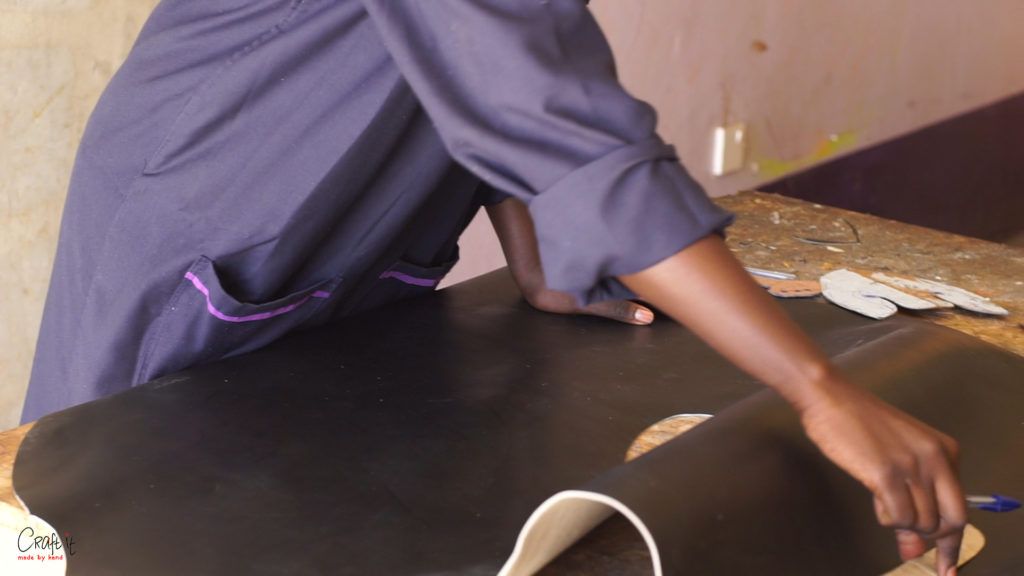
Step 1: Finished leather from the tannery is prepped
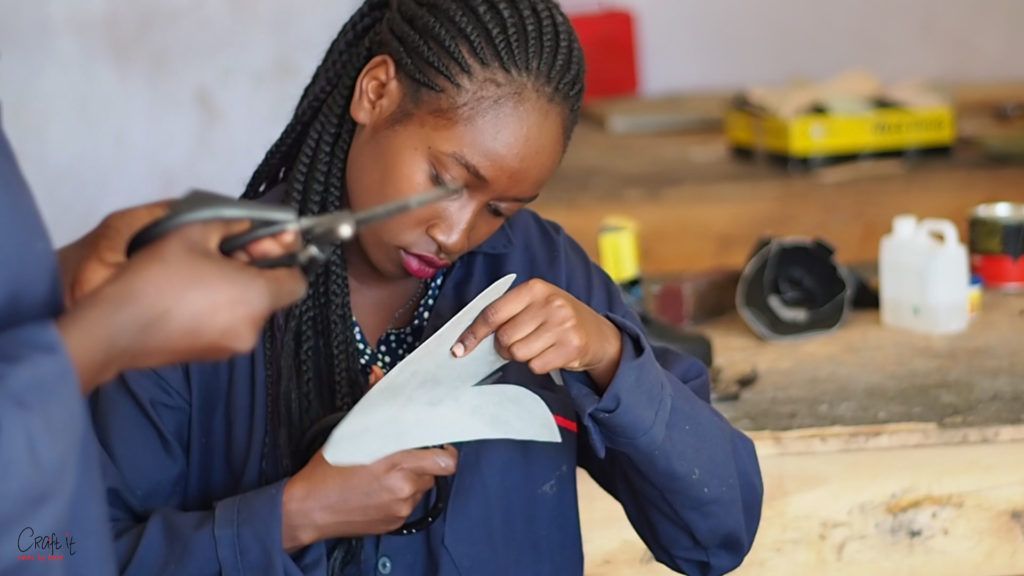
Step 2: The leather is cut as per the shoe pattern selected
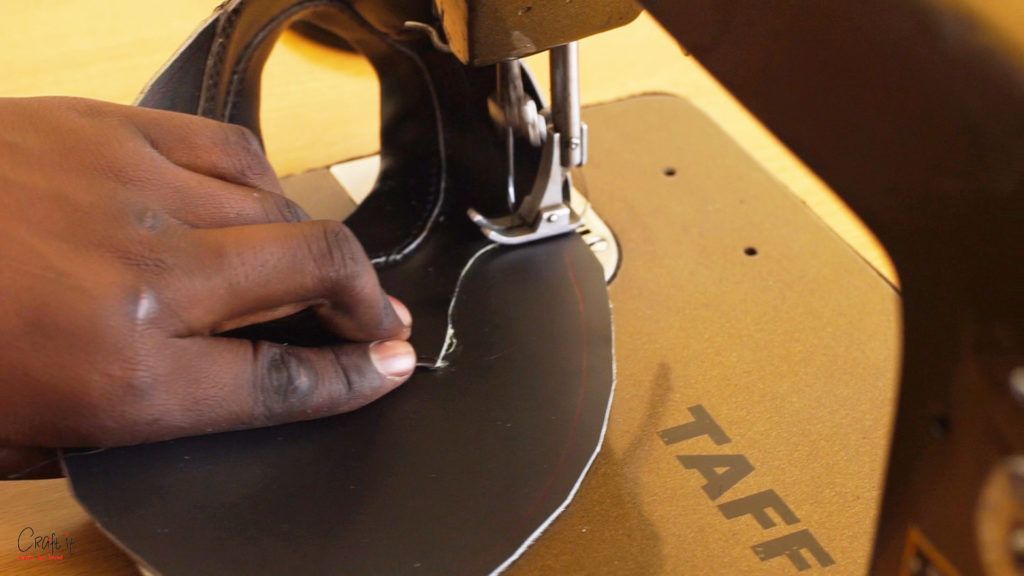
Step 3: Part of the process of stitching the leather
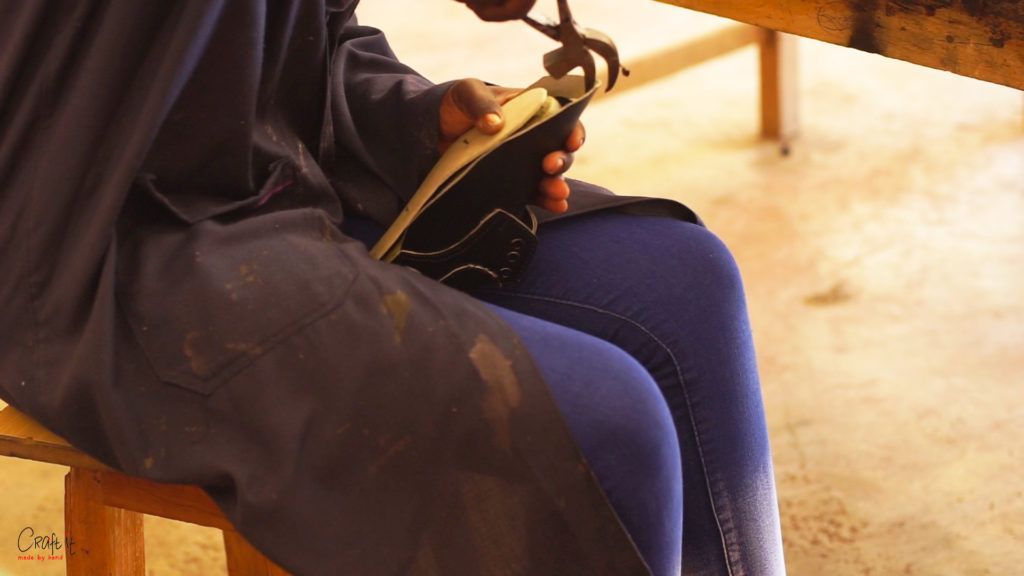
Step 4: Part of the process of finishing the upper

Step 5: Part of the completion process
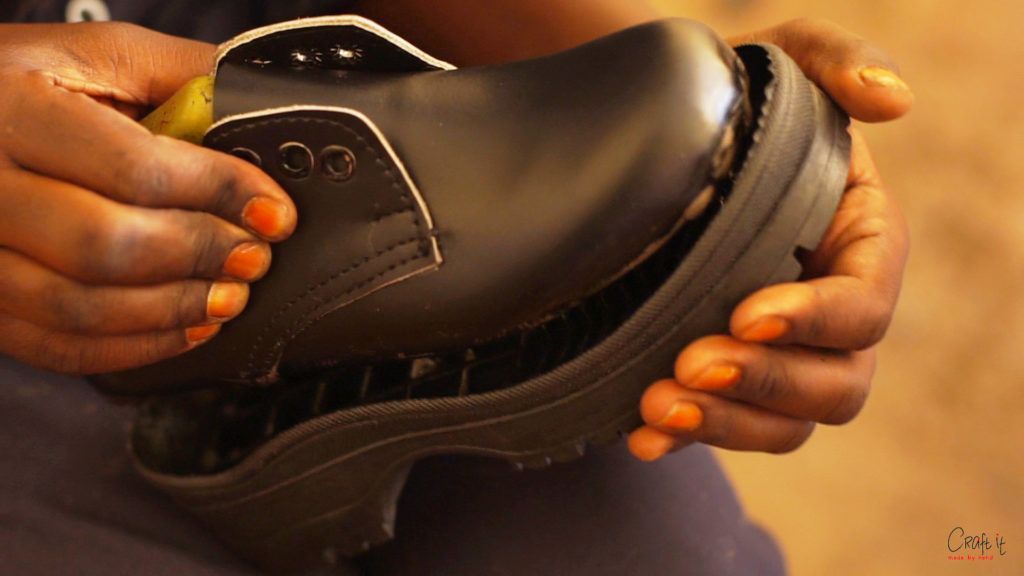
Step 6: Part of the completion process
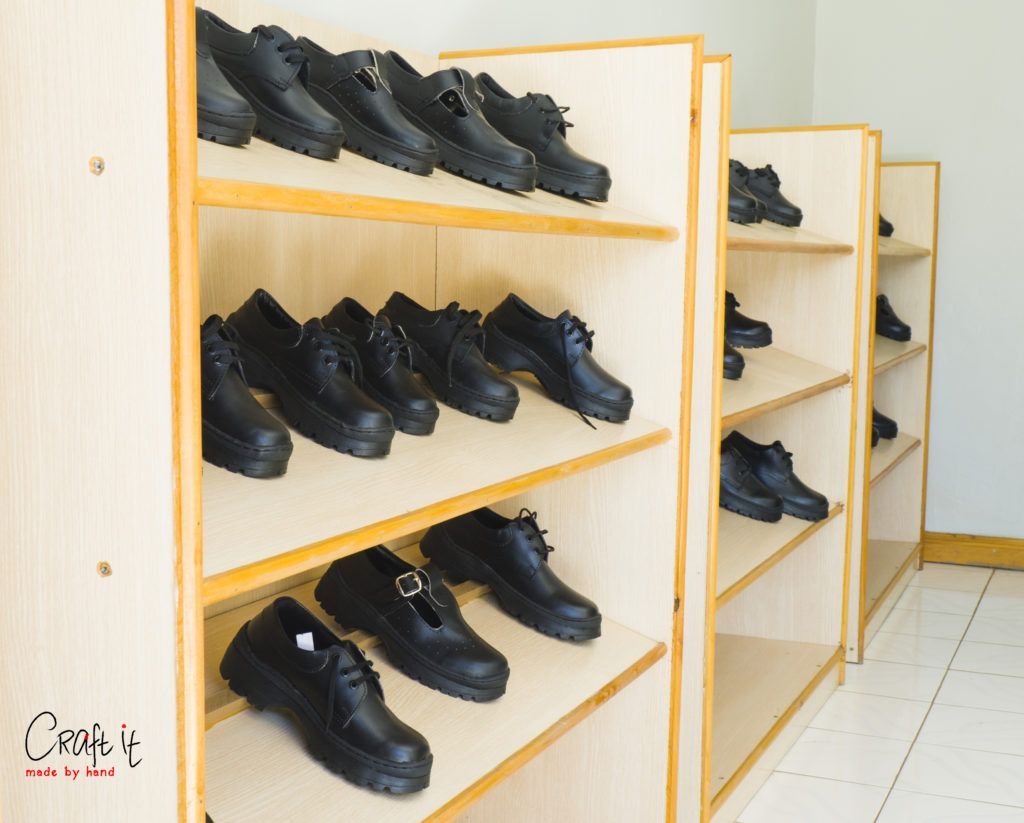
Some of the completed handmade shoes by Manje Leather
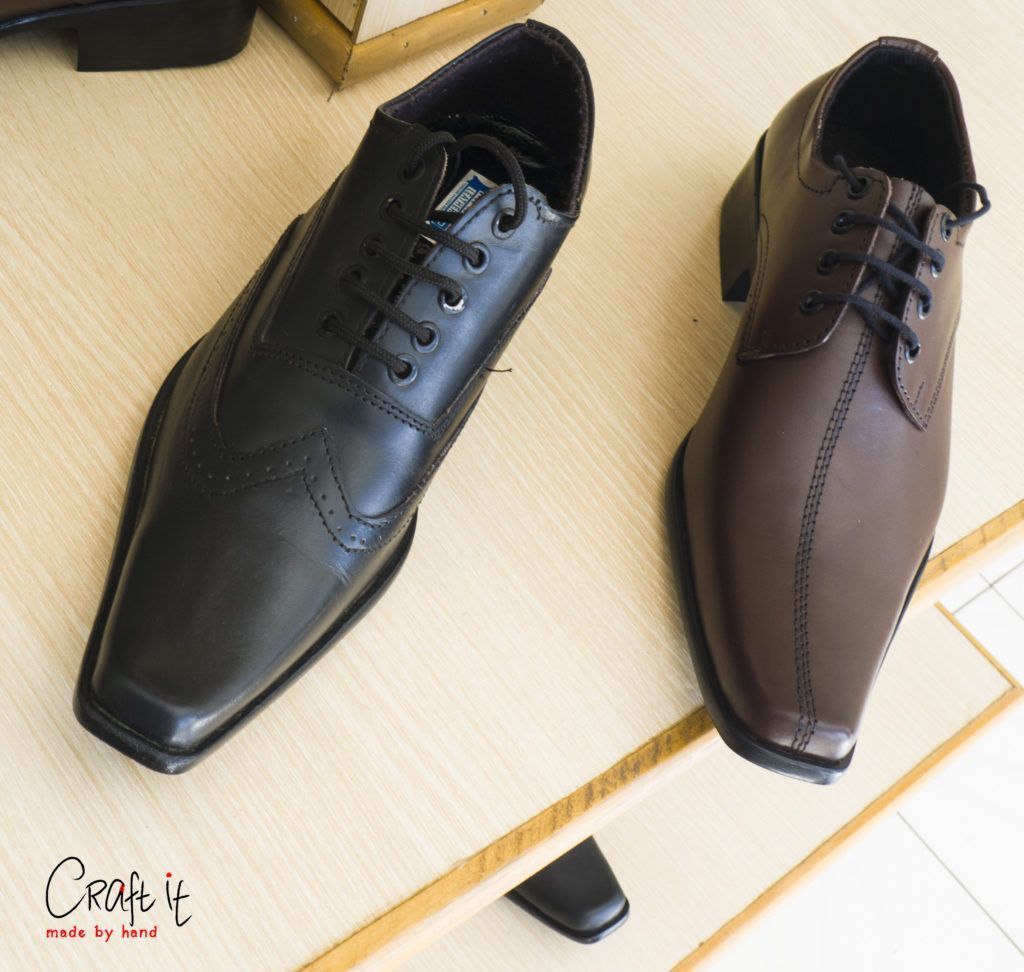
Some of the completed handmade shoes by Manje Leather
